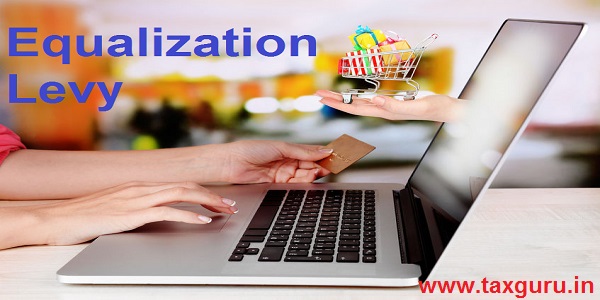Objectives:
To address the base erosion faced in digital economy from limitations of existing international taxation rules, in accordance with international agreement arrived in the BEPS Project. This base erosion happens when a deductible payment is made for the purpose of business and claimed as business expense, but the income arising from such payments is not taxable because of the limitations of existing international taxation rules.
And to reduce the unfair tax advantages enjoyed by a multinational digital enterprise over its Indian competitor, and thereby ensure fair market competition. The unfair tax advantage arises when domestic enterprises are taxed but multinational enterprises are not taxed on their income arising from India.
‘Equalization Levy’ has been recognized and accepted in the BEPS Report on Action 1 as one of the options that can be resorted to by countries under their domestic laws.
On whom it will be levied?
It will be levied only on payments made for certain specified services and facilities provided by multinational enterprises not having Permanent Establishment (PE) in India.
Does this mean it will be chargeable for all Ecommerce Transactions?
It will not be levied on goods to be imported. The fact that orders are placed & payments are made on the internet will not attract Equalization Levy. In other words, what is normally understood as E-Commerce or digital Commerce need not necessarily attract Equalization Levy. Sellers or buyers selling tangible goods by using internet will not be affected, except in respect of payments for specified services.
It will also not be levied on services that are not specified, even if such services are procured by making payments from within India over the internet. Example: Hospitality Services are not specified services. Such transactions are normally known as E-Commerce. However, they will not attract Equalization Levy.
Thus, the Equalization Levy is not necessarily chargeable for all E-Commerce transactions.
Payment Thresholds for Equalization Levy
No Equalization Levy will be charged for payments below the threshold limit of Rs. one lakh for a single payment, or Rs. ten lakh of total payments made in a year by a payer to a single party.
Thus, no Equalization Levy would be levied in the following instances:
(i) An Indian resident makes a single payment for Rs. 95,000 to a foreign enterprise for a specified service;
(ii) An Indian resident makes several payments to a foreign enterprise for specified services, but total of all payments made to that enterprise in the year is less than Rs. one lakh.
(iii) An Indian resident makes several payments to several foreign enterprises for specified services, but the total of all payments made to each of those enterprises in the year is less than Rs. one lakh. These high thresholds are likely to ensure that payments of smaller amounts made by Indian consumers for personal consumption of services are not affected by it.
(iv) In a case, where a total payment exceeding Rs. one lakh is made by a consumer for non-business purposes (such as personal consumption) to a single foreign enterprise in a year, Equalization Levy would be chargeable, but even then there would be no liability on the consumer to deduct it. Thus, -Equalization Levy would not affect non-business consumers.
Filling Of Returns
Non-resident beneficial owner will have to file his tax return only if its annual receipts chargeable to Equalization Levy are in excess of Rs. Ten Crore.
For receipts below Rs. Ten Crore, tax will be payable, but there will be no obligation for the nonresident to file a return. Tax deducted by Indian resident payers will be accepted as final payments, and if Equalization Levy has been deducted on all specified payments by payers in India, no will be further payment required from the beneficial owner. Payers in India will be required to file a online return annually providing basic details of Equalization Levy deducted and paid to the Government
Ease of Compliance and Administration
Compliance of Equalization Levy can be completed on the internet, including payment of Equalization Levy and filing of returns. In view of the simple and certain design of Equalization Levy, the administrative interventions are expected to be minimal, thereby minimizing the need for scrutiny, investigations and appeals. By exempting such income from income-tax, compliance and administrative costs in respect of income-tax are also likely to be reduced.






